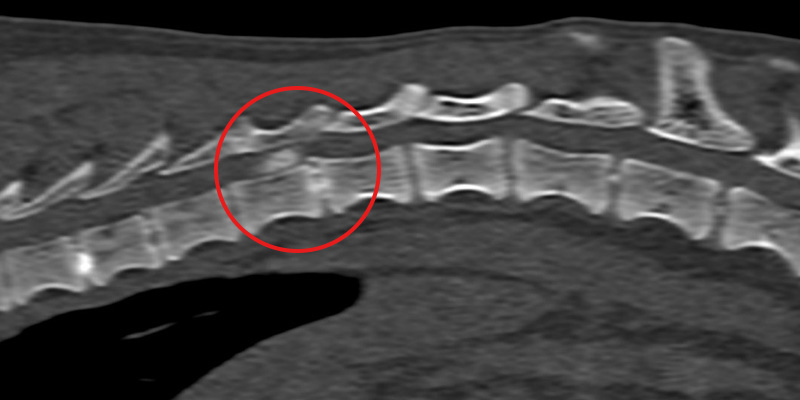Case Studies – Max
Max was referred to us following weakness of his hindlimbs. He had previously undergone surgery on his spine for the same issue (intervertebral disc disease – herniation) at another vertebral location.
Max was examined; it was noted that he was experiencing Grade II (of V) paraparesis – he was ambulatory but with decreased proprioception (awareness of positioning and movement of the limbs). A computerised tomography (CT) scan showed approximately 40% compression of the spinal cord at thoracic vertebra 11 and 12 due to spinal disc extrusion.

One of Max’s vertebra (axial view) not experiencing spinal cord compression: normal

Max’s T11 vertebra (axial view) showing disc material compressing the spinal cord: cause of paresis

Max’s spine (sagittal view) with compression at T11 highlighted
Hemilaminectomy surgery was completed, with a large amount of disc material removed. Max had strict rest orders to follow for 48 hours post-surgery and then began gentle physiotherapy. The day after surgery he began walking well with support, and his neurological function improved.


